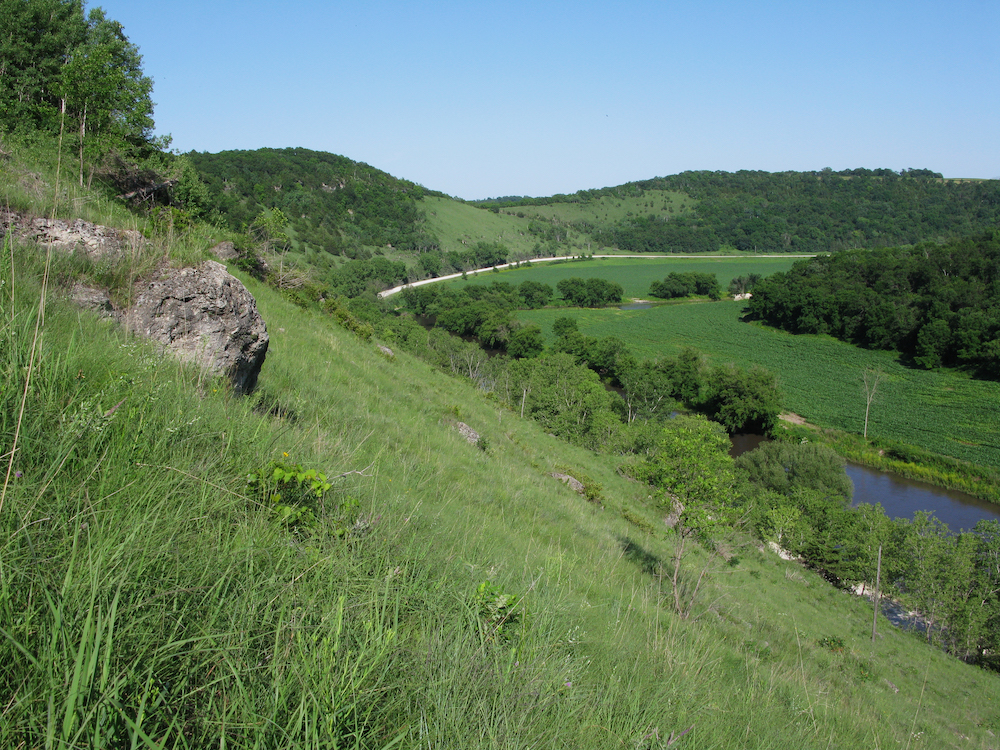Solitaire Ridge: A prairie that provides
By Katy Heggen on September 25, 2017 in Blog

Climbing up Solitaire Ridge, one is struck by the sheer scale of it. Rising above the River Bluffs Scenic Byway, the limestone escarpment stands out among the surrounding hillsides, woodland and river valleys, a crown of rock atop its ridge.
Summiting that ridge, one encounters another stunning view, not of the valley below — which to be clear, is spectacular — but of the 30-acre remnant prairie that runs down the steep, south-facing slopes overlooking the Upper Iowa River.
“It’s not what people typically think of when they think of northeast Iowa,” said Blufflands Director Brian Fankhauser. “It’s so different from everything else in the area.”
But Solitaire Ridge, also known as Mile Long Prairie, is more representative of parts of the area’s true topography than many realize.
Hillside prairies used to be common in northeast Iowa, especially in Allamakee County, where Solitaire Ridge is located. Over the years, they’ve been invaded by native and non-native trees and brush, which have shaded them out.
“It’s rare to see such a large hill prairie,” said Fankhauser. “The size, quality and location among a complex of other protected land in the area made permanently protecting this place a priority for INHF.”
Solitaire Ridge provides scenic beauty, habitat and open space, but its remnant prairies also provide another incredible resource: native prairie seed.
In recent years, INHF interns, volunteers and staff have harvested native prairie seed from Solitaire Ridge and nearby Heritage Valley. Last year, Fankhauser and Blufflands Assistant Jered Bourquin used that seed to plant 1.5 acres of prairie on former cropland below the ridge. That planting was expanded to include an additional 1.5 acres this spring. Eventually, five acres will be planted to prairie.
The project is a partnership between INHF, the Iowa Department of Natural Resources and the Prairie Resource Center. Seed collected at Solitaire Ridge will be sent to the Prairie Research Center to be stored, cleaned and redistributed to other prairie restorations in the area. Not only does this aid those projects, it creates a bridge between them.
“Prairies can be pretty isolated,” Fankhauser said. “You can never recreate those remnants, but by taking seed from this site and planting it in some of those projects, we can help reconnect them.”
Standing on top of Solitaire Ridge, you can’t but help but ponder the significance of the place. And because the prairie provides, more of Iowa is beginning to look like this once again.